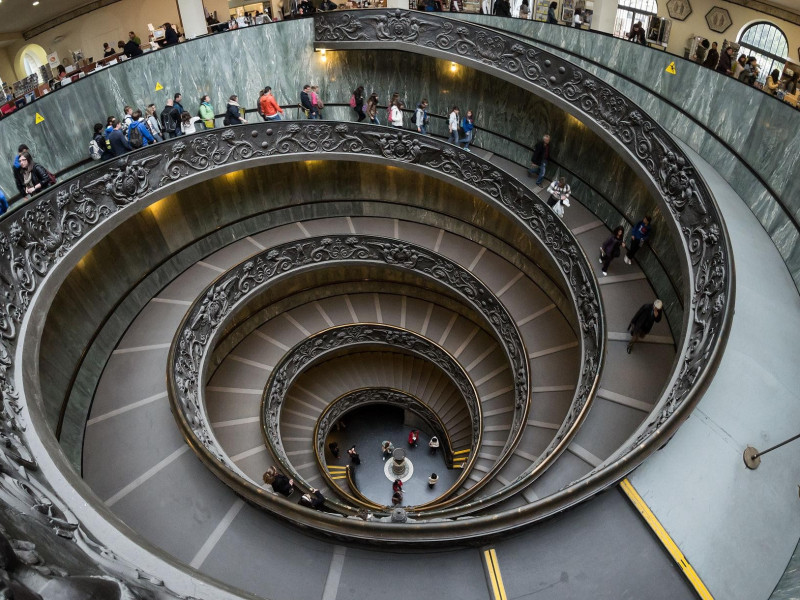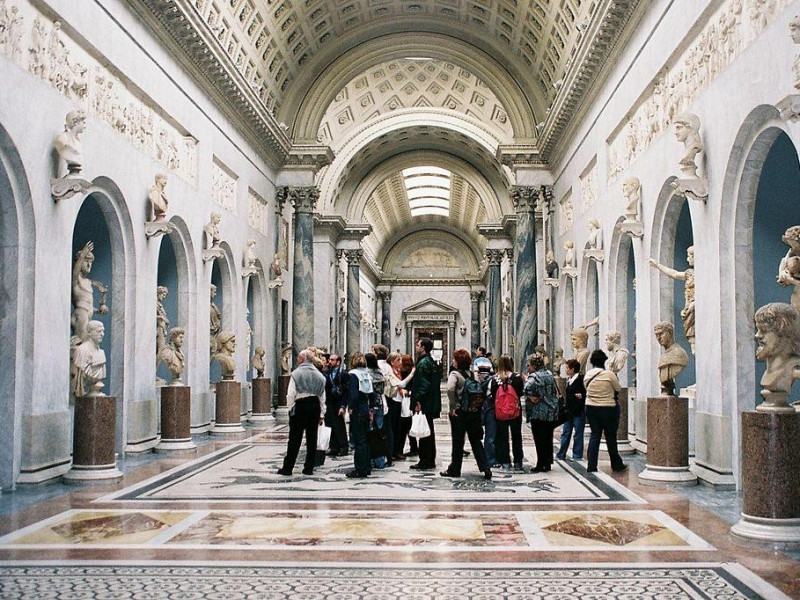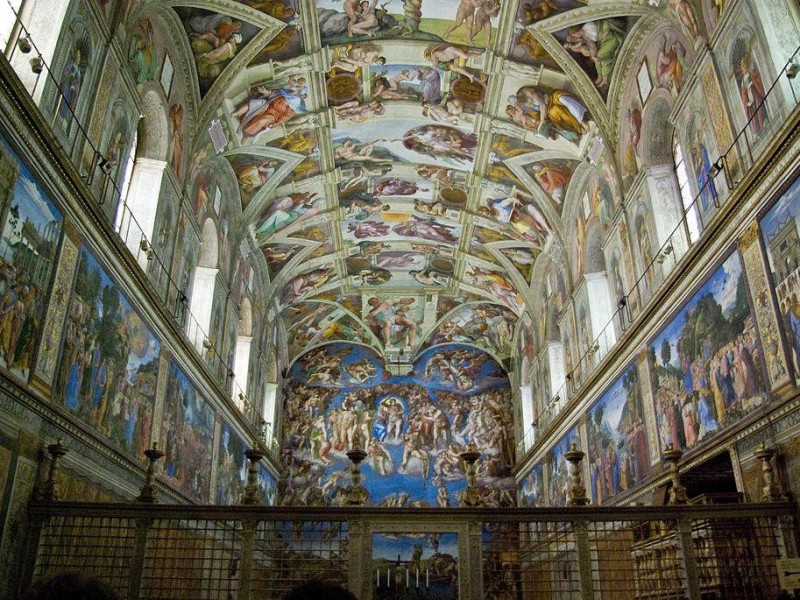Musei Vaticani - Cappella Sistina
The Vatican Museums, one of the largest collections of art in the world, are located in the State of Vatican City, in Rome. Founded by Pope Julius II in 1506 and opened to the public in 1771 by Pope Clement XIV, they originate from the discovery of the statue of Laocoon in a vineyard near the Basilica of St. Mary the Greater. Rightly called in the plural, the Vatican Museums are a collection of museums, including: the Museums and the Vatican Apartments. Museums are divided, in turn, in the Pinacoteca Vaticana (by Luca Beltrami, contains works by Giotto, Leonardo, Raphael and Caravaggio), the Collection of Modern Religious Art (collects works by Francis Bacon, Carlo Carrà, Marc Chagall, Salvador Dalì, Giorgio De Chirico, Paul Gauguin, Wassily Kandinsky, Henri Matisse and Vincent Van Gogh), the Pio-Clementino Museum (collection of works by ancient and Renaissance, then expanded with Greek and Roman sculptures), the Missionary-Ethnological Museum (founded in 1926, houses religious works from all parts of the world), the Gregorian Museum with Egyptian Sections (houses an extensive collection of Ancient Egyptian artifacts, including the famous "Dead's Book" and the Grassi Collection) and Etruscan Section (eight galleries with important Etruscan finds, such as vases, sarcophagi, bronzes and note Guglielmi Collection), the Pio Christian Museum, the Gregorian Profane Museum, the Historical Vatican Museum with the Carriage Pavilion (retains some of the vehicles with which they moved the popes in the past), the Philatelic and Numismatic Museum, the Museum of the Vatican Library and the Chiaramonti Museum (large gallery which houses numerous sculptures, friezes and sarcophagi, as well as the new wing called "New Wing" and Lapidary). The Museums themselves, alongside the visit of Palaces and Chapels: Candelabra Gallery, Tapestry of Maps, the Sistine Chapel, Chapel of Nicholas V, Chapel of Urban VIII, Biga Hall, House of St. Pius V, Sobieski Room, Room of the Immaculate, Raphael Rooms, Loggia of Raphael, Hall of Chiaroscuri and Borgia Apartment. The Sistine Chapel, dedicated to Our Lady of the Assumption, is one of the most famous cultural and artistic treasures of the Vatican City. It was built between 1475 and 1481, at the time of Pope Sixtus IV della Rovere, which took its name. It is known throughout the world for being the place where the conclave is held, it is to be decorated with the works of art the most famous and celebrated: the frescoes by Michelangelo Buonarroti, covering the vault (1508-1512) and the wall (Judgement) above the altar (1535-1541). As the most comprehensive and important "visual theology" of the West, has the frescoed walls of some of the greatest Italian artists of the second half of the fifteenth century (Sandro Botticelli, Pietro Perugino, Pinturicchio, Domenico Ghirlandaio, Luca Signorelli, Piero Di Cosimo and others). The general program of the paintings is divided into three registers, from bottom to top: the plinth with fake tapestries, the second order with scenes from the Old Testament (scenes from the Moses's life) and the New Testament (scenes from the Christ's life) and the order with the highest representation of martyred popes.
Info:
From Monday to Saturday: from 9:00 am to 4:00 pm (closing at 6:00 pm).





